by Ray Linville
What makes boiled peanuts so enjoyable in the Old North State? “Boiling peanuts brings out a kind of mellowness to the nut which is … like tasting ripeness in a pear,” says food historian David Shields.
Peanuts, planted in May, are ready for harvest in September and October. Although raw in the shell and roasted varieties are popular, this state has a long-standing tradition that favors boiled peanuts.
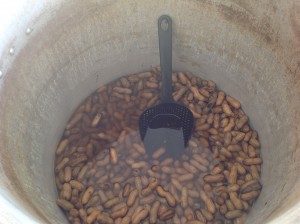
Boiled peanuts can be found at roadside stands, farmers markets, and stores selling local products throughout the year, but after August their availability is more noticeable. In the fall you may even find someone selling them from a vehicle at an intersection or along a busy route.
At the terminus of U.S. 421 that begins northward outside Wilmington, I met W.A. Gravitt, who was selling boiled peanuts out of the back of his well-used pickup truck. “I’ve just boiled up 10 pounds. I usually give them away to good friends, but I came out today to see if I could sell any,” he told me. In addition to his fondness for preparing boiled peanuts, he also grows purple-top turnips, field peas, collard plants, and tomatoes at his home garden in Wilmington and property in neighboring Brunswick County – an impressive achievement for someone 69 years old.

Because boiled peanuts are clearly his favorite snack, I was surprised that he was selling any of the ones that he had just boiled. His fondness for boiled peanuts is not surprising considering the generations-old importance of the peanut in that part of the state. The first commercial peanuts in N.C. were grown in the Wilmington area in 1818. Although overall state acreage has declined from a peak in 1945, peanut production is on the increase in the southeastern part of the state.
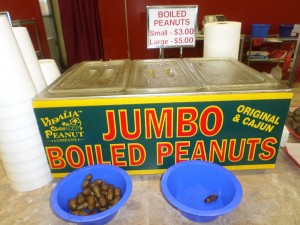
Boiled peanuts take a prominent place (along with beauty queens) at the three N.C. peanut festivals, all in the eastern part of the state: Fountain, Dublin, and Edenton. The festivals typically feature boiled peanuts – both hot and cold – among the other peanut choices. The festivals are staggered as the peanuts are being harvested: Fountain in mid-August, Dublin in mid-September, and Edenton in early October. Each attracts 5,000 to 10,000 spectators and provides the opportunity for a community to celebrate its peanut heritage as well as raise funds for special projects.
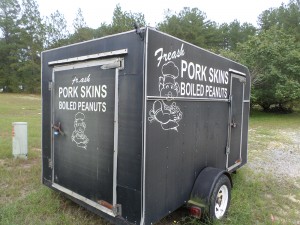
Boiling peanuts once was a seasonal preparation occurring only during the peanut harvest. The high moisture requires that peanuts be cooked or air-dried within days after being harvested; otherwise, they go bad. Vines were stacked in the fields and allowed to cure for two weeks; then the pods were dry enough to pick off and could be roasted or transported. Boiling was a favorite way of enjoying peanuts immediately when they were too “green” to roast.

The availability of boiled peanuts for sale usually is not a topic of public concern. However, it was in 1955 after the U.S. Secretary of Agriculture introduced regulations that inadvertently cut the amount of boiled peanuts sold drastically. To action sprang Congress, which passed a law that exempted peanuts marketed before drying (meaning peanuts that ended up being boiled).
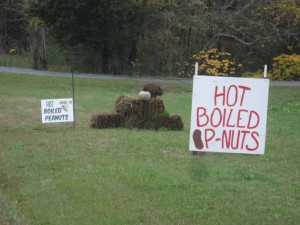
Recently food historians have sought to clarity the roots of boiled peanuts, which were enjoyed as “refreshments” at weddings and social parties of elite families in the South over 100 years ago. With the importance of peanuts in our food culture, it’s easy to mistake the peanut as a native of the South. Food historians identify its origin as South America. From there, it was taken by European traders across the Atlantic Ocean to Africa, Europe, and Asia.

Although South Americans roasted the peanut, it was boiled by Africans who considered it similar to the Bambara groundnut, a native plant they had been boiling to ease its ingestion. The peanut later entered North America during colonial times from Africa with enslaved Africans brought to labor in agricultural fields also brought the practice of boiling a groundnut.
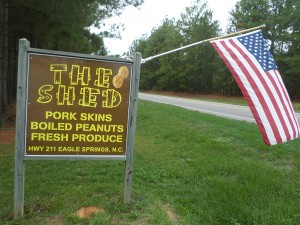
Boiled peanuts – they’re not a delicacy. However, they are treated as such by many residents in our state who recognize their historic and cultural connections. The status of boiled peanuts is also on the rise in restaurants that feature creative dishes using locally grown produce, such as Chef and the Farmer in Kinston, where Vivian Howard of the TV show The Chef’s Life has featured boiled peanuts in special dishes. (Some imaginative chefs are even boiling peanuts in bourbon, not water, to enhance their appeal to guests who need a little encouragement to try them.)
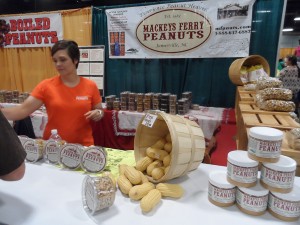
When you see a vendor selling boiled peanuts, don’t pass by and miss the opportunity to enjoy a few yourself and engage in an interesting conversation. Stop and find out what people on both sides of the Atlantic Ocean have been enjoying for centuries.

The steps for boiling peanuts are relatively simple:
- Place raw peanuts in the shell in a pot and fill with water.
- Add 3/4 cup of salt per pound of peanuts.
- Bring water to a boil; then decrease the heat to a high simmer and leave for 6 hours until peanuts are tender. Add water as necessary to keep peanuts covered.
- Store in airtight container in refrigerator.
Note: If the peanuts have been dried, they cook more thoroughly and uniformly if soaked in water overnight. Adding salt (1/2 cup per 2 gallons of water) in the water keeps yeasts and molds from developing overnight.
Resources
About Peanuts
Dublin Peanut Festival
http://www.dublinpeanutfestival.com/
Edenton Peanut Festival
http://visitedenton.com/calendar-event.php?id=202
Fountain Peanut Festival
http://www.fountainpeanutfestival.net/
How Congress Almost Killed the Southern Boiled Peanut
http://www.seriouseats.com/2015/08/boiled-peanuts-civil-rights-history.html
North Carolina Department of Agriculture and Consumer Services
http://www.ncagr.gov/index.htm
N.C. Peanuts
https://ipm.ces.ncsu.edu/ipm-peanuts/
Peanuts: The Southern Snack
http://etvradio.org/post/peanuts-southern-snack
The Real Origins of the Boiled Peanut
http://www.seriouseats.com/2015/08/history-southern-boiled-peanuts.html
Leave a Reply